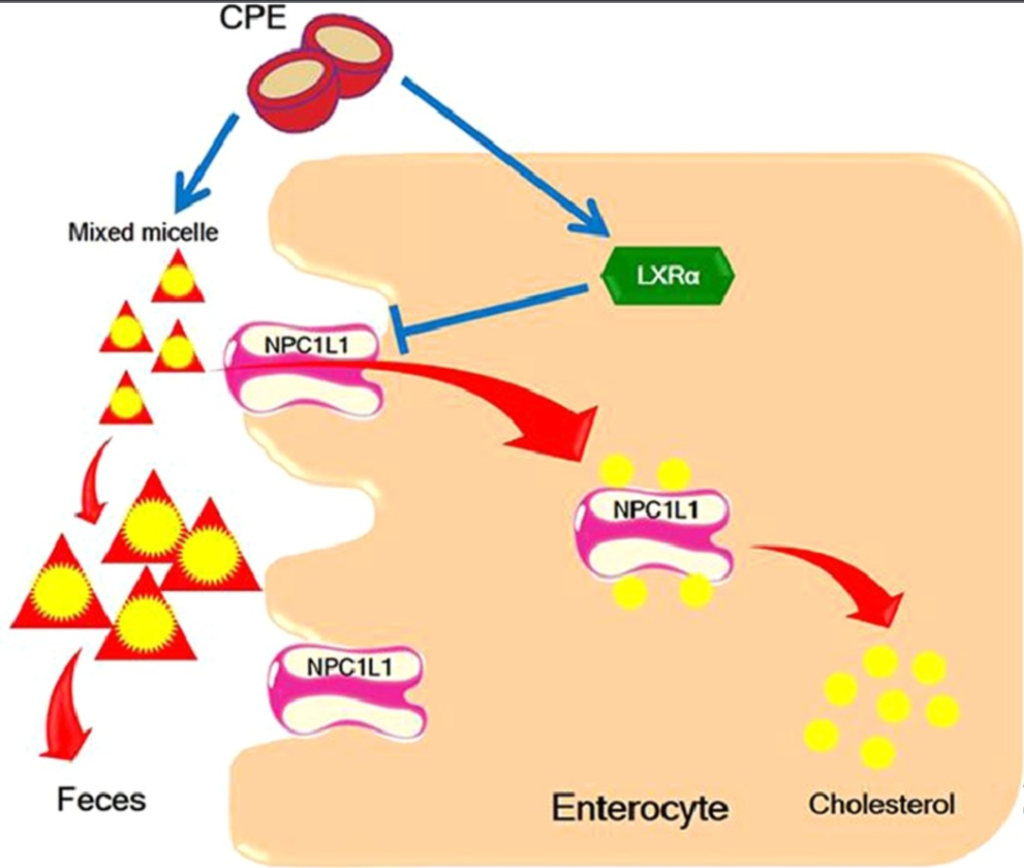
Quick Navigation
In the world of coffee, there exists a captivating aroma that has the power to awaken our senses and transport us to a realm of rich flavors and delightful experiences. This elusive essence, known as Caffeol, is an integral component of coffee’s allure and plays a pivotal role in defining its character. Caffeol, a naturally occurring oil found in coffee beans, possesses a remarkable range of aromatic compounds that contribute to the diverse flavors and aromas we associate with our beloved cup of joe. In this article, we will delve into the depths of Caffeol, unraveling its secrets and exploring its significance in the captivating world of coffee. From its chemical composition to its impact on our sensory perception, we will journey through the complexities of Caffeol and gain a deeper understanding of the magic it brings to our daily brew. Whether you are an avid coffee enthusiast or simply intrigued by the science behind our favorite morning beverage, join us as we unravel the aromatic wonders of Caffeol.
What Is Caffeol?
Definition of Caffeol: A fragrant oil produced by roasting coffee [1]
When we take that first delightful sip of coffee, it’s not just the caffeine that jolts us awake—it’s the mesmerizing symphony of flavors and aromas that dance on our taste buds. At the heart of this sensory extravaganza lies caffeol, an enchanting compound that holds the key to coffee’s captivating allure. But what exactly is caffeol? Chemically speaking, caffeol is a complex mixture of aromatic compounds that are naturally present in coffee beans. These compounds are responsible for the distinctive scent and taste profiles that vary from a fruity brightness to a rich and robust earthiness. Caffeol is like the conductor of a coffee symphony, orchestrating the intricate notes that create the harmonious blend of flavors and the alluring fragrance that we know and love. Let’s dive deeper into the chemical nature of caffeol and unravel how it contributes to the mesmerizing world of coffee.
Impact of Caffeol on Health: Lowering Blood Sugar
Caffeol exhibits promising properties in combating diabetes by enhancing the secretion of insulin in response to glucose stimulation and facilitating the absorption of glucose in human skeletal muscle cells. [2]
How Caffeol Contributes To Coffee Flavor And Aroma
Caffeol, with its intricate blend of aromatic compounds, plays a fundamental role in shaping the mesmerizing flavors and captivating aromas that make each cup of coffee a unique sensory experience. As coffee beans undergo roasting, the heat triggers a cascade of chemical reactions that transform precursor compounds into caffeol. It is these caffeol compounds that infuse coffee with a multitude of flavors, ranging from bright and lively to deep and complex.
One of the key ways in which caffeol contributes to coffee flavor is through its ability to evoke a diverse range of taste notes. For instance, certain aromatic compounds within caffeol, such as aldehydes and ketones, can lend a delightful sweetness to the brew, reminiscent of caramel or chocolate. Other compounds, like pyrazines, add earthy and nutty undertones, while floral and fruity notes arise from the presence of various esters. The intricate interplay of these aromatic compounds gives rise to a symphony of flavors that tantalize our taste buds.

In addition to flavor, caffeol also significantly influences coffee’s enchanting aroma. When we take a moment to inhale the fragrant steam rising from our cup, it is the volatile compounds within caffeol that waft into our olfactory receptors, creating an alluring bouquet. These aromatic compounds, including various phenols and furans, can give rise to floral, fruity, spicy, or even smoky aromas, heightening our overall sensory experience and inviting us to delve deeper into the complexities of the coffee we savor.
Moreover, the concentration and balance of caffeol compounds can vary depending on factors such as the coffee bean variety, the roasting process, and even the brewing method employed. This variability accounts for the vast array of coffee profiles we encounter, ranging from bright and acidic to mellow and full-bodied, from delicate and nuanced to bold and robust. Caffeol, with its multifaceted presence, ensures that every cup of coffee tells a unique story, inviting us to explore the world of flavors and aromas it has to offer.
By appreciating how caffeol contributes to coffee’s flavor and aroma, we can develop a deeper understanding and appreciation for the intricate craftsmanship and science behind the art of coffee-making. So the next time you savor that cup of coffee, take a moment to reflect on the delightful influence of caffeol, as it delights your palate and tantalizes your senses.
Formation Of Caffeol
As the sun rises, casting a warm glow across the coffee plantations, a transformational journey begins. Deep within the heart of each humble coffee bean lies a hidden secret, waiting to be unlocked. It is during the roasting process that the true essence of coffee, embodied in the captivating compound known as caffeol, is revealed. Let’s delve into the alchemical process that brings caffeol to life, as chemical reactions dance and intermingle within the beans.
A. Chemical Reactions That Lead To Caffeol Formation:
The formation of caffeol, that magical compound responsible for the captivating flavors and aromas in coffee, is a result of complex chemical reactions that occur during the roasting process. When coffee beans are subjected to heat, a series of transformations take place within the beans, leading to the creation of caffeol.
Firstly, during the initial stage of roasting, a process known as Maillard reaction occurs. This reaction involves the interaction between amino acids and reducing sugars present in the coffee beans. As the temperature rises, these compounds undergo a chemical rearrangement, producing a wide range of flavor and aroma compounds. The Maillard reaction is responsible for creating the delightful notes of caramel, chocolate, and toasty flavors that we associate with a well-roasted coffee.
Simultaneously, another crucial process called pyrolysis takes place. Pyrolysis involves the breakdown of organic compounds due to intense heat. As the coffee beans reach higher temperatures, various volatile compounds within the beans, including lignin and cellulose, decompose and release additional aromatic compounds. These compounds contribute to the depth, complexity, and richness of coffee’s flavor and aroma profiles.
Together, the Maillard reaction and pyrolysis reactions work in harmony to transform precursor compounds into caffeol, the compound that defines the essence of coffee. The exact composition and concentration of caffeol compounds can vary depending on factors such as the bean variety, roast level, and duration of the roasting process.
B. Factors Influencing The Production Of Caffeol During Coffee Roasting:
Several factors come into play during coffee roasting, influencing the production of caffeol and ultimately shaping the flavor and aroma of the final brew.
- Roast level: The degree of roasting significantly impacts the formation of caffeol. Lighter roasts tend to preserve more of the delicate and nuanced flavors, whereas darker roasts result in the development of bolder and more pronounced flavors, often accompanied by smoky or roasted notes.
- Roasting temperature and time: The duration and intensity of the roasting process play a crucial role in determining the production of caffeol. Higher temperatures and longer roasting times can lead to a more extensive breakdown of compounds, resulting in a richer and more complex profile of flavors and aromas.
- Bean variety: Different coffee bean varieties contain varying levels of precursors that contribute to caffeol formation. Factors such as the genetic makeup of the bean, the altitude at which it is grown, and the specific environmental conditions can influence the concentration and composition of aromatic compounds.
- Environmental conditions: The ambient conditions during coffee cultivation, such as temperature, humidity, and soil composition, can influence the chemical composition of coffee beans. These variations can impact the formation of caffeol during the roasting process.
By understanding the chemical reactions involved in caffeol formation and the factors that influence its production, coffee roasters and enthusiasts can fine-tune their techniques to achieve desired flavor profiles and create a symphony of flavors and aromas that delight the senses with each sip of coffee.
Characteristics of Caffeol
Caffeol, the mystical essence found in coffee beans, enchants our senses with its tantalizing attributes. From the sweet whispers of caramel to the lively zest of citrus, and the aromatic dance of floral notes, caffeol creates a sensory symphony that elevates our coffee experience.
A. The Sensory Attributes Associated With Caffeol:
Caffeol, the enchanting compound found in coffee, holds within it a symphony of sensory attributes that elevate our coffee-drinking experience. When we indulge in a cup of coffee infused with caffeol, our senses are awakened to a world of delightful flavors and enticing aromas.
In terms of taste, caffeol contributes to a wide range of sensory attributes. It can bring a delightful sweetness, ranging from subtle notes of caramel and honey to bolder flavors of dark chocolate and molasses. Caffeol can also contribute to a pleasant acidity, ranging from bright and lively citrus notes to a softer, more nuanced fruity tang. Additionally, it adds body and depth to coffee, providing a fullness and richness on the palate. Caffeol can even introduce intriguing undertones of spices, nuts, and earthy flavors, adding complexity and nuance to the overall taste profile.
When it comes to aroma, caffeol is a key player in creating a captivating olfactory experience. As we inhale the fragrant steam rising from our cup, the volatile compounds within caffeol tantalize our senses with their enticing bouquet. Floral and fruity aromas can evoke delicate notes of jasmine, berries, or tropical fruits. Roasted and nutty aromas may emerge, offering hints of toasted almonds, hazelnuts, or warm spices. The unique combination of these aromatic compounds creates a symphony of scents that enhance our overall enjoyment of coffee.
B. Impact of Caffeol on the Taste And Aroma Profiles of Different Coffee Varieties:
Caffeol plays a significant role in shaping the taste and aroma profiles of different coffee varieties, lending each cup its own distinct character and identity. The precise composition and concentration of caffeol compounds can vary based on factors such as the coffee bean variety, growing conditions, processing methods, and roasting techniques.
For example, certain coffee varieties, such as Ethiopian Sidamo or Yirgacheffe, are known for their vibrant and complex floral aromas. This is attributed, in part, to the presence of specific aromatic compounds within caffeol. On the other hand, coffee beans from regions like Sumatra or Java often showcase deep and earthy flavors, owing to different caffeol compounds that contribute to those profiles.
The impact of caffeol on taste and aroma profiles extends beyond regional variations. Roasting levels and techniques further influence the expression of caffeol in coffee. Lighter roasts tend to highlight the brighter and more delicate flavor notes, while darker roasts bring out the bolder and richer characteristics associated with caramelization and the breakdown of caffeol compounds.
By understanding how caffeol influences the taste and aroma profiles of different coffee varieties, we gain a deeper appreciation for the intricate nuances and diversity found in our daily cup of coffee. Whether you prefer the floral elegance of a light Ethiopian roast or the robust earthiness of a dark Sumatran brew, caffeol is at the heart of the sensory journey that awaits us with each sip.
Importance of Caffeol in Coffee
Caffeol, the secret alchemist of coffee, holds a paramount significance in our beloved brew. It is the guardian of unique qualities, defining the distinct character of each coffee bean. Caffeol weaves its aromatic magic, enhancing our coffee drinking experience with its captivating flavors and enticing aromas.
A. Role of Caffeol in Defining the Unique Qualities of Various Coffee Beans:
Caffeol acts as the artist’s brush, painting a vibrant tapestry of flavors and aromas that differentiate one coffee bean from another. It plays a pivotal role in shaping the distinctive qualities of various coffee varieties, each boasting its own captivating characteristics. From the delicate floral notes of Ethiopian beans to the earthy richness of Sumatran offerings, caffeol leaves its signature imprint on the canvas of coffee, ensuring a world of diversity and exploration for coffee enthusiasts.
B. How Caffeol Contributes to the Overall Coffee Drinking Experience:
Caffeol holds the power to transform an ordinary cup of coffee into an extraordinary sensory experience. Its aromatic dance seduces our senses, as we inhale the enchanting bouquet that rises from our cup. With each sip, caffeol takes us on a tantalizing journey, delivering a symphony of flavors that dance upon our taste buds. It adds depth, complexity, and richness to our coffee, elevating the overall drinking experience and leaving an indelible mark on our palates. Caffeol is the invisible companion that enhances our appreciation of coffee’s wonders, making every sip a moment of pure pleasure.
Caffeol and Caffeine: Two Main Components in Coffee: What They Do?
William H. Ukers writes in his book All About Coffee:
“Men and women drink coffee because it adds to their sense of well-being.
It not only smells good and tastes good to all mankind, heathen or
civilized, but all respond to its wonderful stimulating properties. The
chief factors in coffee goodness are the caffeine content and the
caffeol. Caffein supplies the principal stimulant. It increases the
capacity for muscular and mental work without harmful reactions. The
caffeol supplies the flavor and the aroma–that indescribable Oriental
fragrance that wooes us through the nostrils, forming one of the
principal elements that make up the lure of coffee. There are several
other constituents, including certain innocuous so-called caffetannic
acids, that, in combination with the caffeol, give the beverage its rare
gustatory appeal.”
All About Coffee, by William H. Ukers [3]
Caffeol in The Aromatic Principles of Coffee
In his book All About Coffee, William H. Ukers writes under the heading _The Aromatic Principles of Coffee_
“To ascertain just what substance or substances give the pleasing and
characteristic aroma to coffee has long been the great desire of both
practical and scientific men interested in the coffee business. This
elusive material has been variously called caffeol, caffeone, “the
essential oil of coffee,” etc., the terms having acquired an ambiguous
and incorrect significance. It is now generally agreed that the aromatic
constituent of coffee is not an essential oil, but a complex of
compounds which usage has caused to be collectively called “caffeol.“”
He writes, “Comparison of the aroma given off by coffee during the roasting process
with that of fresh-ground roasted coffee shows that the two aromas,
although somewhat different, may be attributed to the same substances
present in different proportions in the two cases. Recovery and
identification of the aromatic principles escaping from the roaster
would go far toward answering the question regarding the nature of the
aroma. Bernheimer[146] reported water, caffein, caffeol, acetic acid,
quinol, methylamin, acetone, fatty acids and pyrrol in the distillate
coming from roasting coffee. The caffeol obtained by Bernheimer in this
work was believed by him to be a methyl derivative of saligenin.
Jaeckle[147] examined a similar product and found considerable
quantities of caffein, furfurol, and acetic acid, together with small
amounts of acetone, ammonia, trimethylamin, and formic acid. The caffeol
of Bernheimer could not be detected. Another substance was separated
also, but in too small a quantity to permit complete identification.
This substance consisted of colorless crystals, which readily sublimed,
melted at 115° to 117° C., and contained sulphur. The crystals were
insoluble in water, almost insoluble in alcohol, but readily soluble in
Ether.”
All About Coffee, by William H. Ukers [4]
How to Produced Caffeol in Coffee: Caffeol Formula
William H. Ukers writes, “As stated above, the empyreumatic volatile aromatic constituents of the
coffee are without question formed during and by the roasting process.
According to Thorpe,[151] the most favorable temperature for development
of coffee odor and flavor is about 200° C. Erdmann claimed to have
produced caffeol by gently heating together caffetannic acid, caffein,
and cane sugar. Other investigators have been unable to duplicate this
work. Another authority,[152] giving it the empirical formula
C_8_H_10_O_2, states that it is produced during roasting, probably
at the expense of a portion of the caffein. These conceptions are in the
main incomplete and inaccurate.
By means of careful work, Grafe[153] came closer to ascertaining the
origin of the fugacious aromatic materials. His work with normal,
caffein-free coffee and with Thum’s purified coffee led him to state
that a part of these substances was derived from the crude fiber,
probably from the hemi-cellulose of the thick endosperm cells.
Sayre[154] makes the most plausible proposal regarding the origin of
caffeol. He considers the roasting of coffee as a destructive
distillation process, summarizing the results, briefly, as the
production of furfuraldehyde from the carbohydrates, acrolein from the
fats, catechol and pyrogallol from the tannins, and ammonia, amins, and
pyrrols from the proteins. The products of roasting inter-react to
produce many compounds of varying degrees of complexity and toxicity.
The great difficulty which arises in the attempt to identify the
aromatic constituents of coffee is that the caffeols of no two coffees
may be said to be the same. The reason for this is apparent; for the
green coffees themselves vary in composition, and those of the same
constitution are not roasted under identical conditions. Therefore, it
is not to be expected that the decomposition products formed by the
action of the different greens would be the same. Also, these volatile
products occur in the roasted coffee in such a small amount that the
ascertaining of their percentage relationship and the recognition of all
that are present are not possible with the methods of analysis at
present at our disposal. Until better analytical procedures have been
developed we can not hope to establish a chemical basis for the grading
of coffees from this standpoint.
All About Coffee, by William H. Ukers [5]
Is Caffeol an Oil? Coffee Oil and Fat
William H. Ukers writes,
“It is well to distinguish between the “coffee oils,” as they are termed
by the trade, and true coffee oil. In speaking of the qualities of
coffee, connoisseurs frequently use erroneous terms, particularly when
they designate certain of the flavoring and aromatic constituents of
coffee as “oils” or “essential oils.” Coffee does not contain any
essential oils, the aromatic constituent corresponding to essential oil
in coffee being caffeol, a complex which is water-soluble, a property
not possessed by any true oil. True, the oil when isolated from roasted
coffee does possess, before purification, considerable of the aromatic
and flavoring constituents of coffee. They are, however, no part of the
coffee fat, but are held in it no doubt by an enfleurage action in much
the same way that perfumes of roses, etc., are absorbed and retained by
fats and oils in the commercial preparation of pomades and perfumes.
This affinity of the coffee oil for caffeol assists in the retention of
aromatic substances by the whole roasted bean. However, upon extraction
of ground roasted coffee with water, the caffeol shows a preferential
solubility in water, and is dissolved out from the oil, going into the
brew.”
All About Coffee, by William H. Ukers [6]
William H. Ukers writes, “The carbohydrates both dehydrate and decompose. The result of the
dehydration is the formation of caramel and related products, which
comprise the principal coloring matters in coffee infusion. That portion
of the carbohydrates known as pentosans gives rise to furfuraldehyde,
one of the important components of caffeol.”
All About Coffee, by William H. Ukers [7]
Physiological Action of Caffeol
William H. Ukers writes,
“The evidence regarding the physiological action of caffeol is
contradictory in many cases. J. Lehmann found in 1853, that the
“empyreumatic oil of coffee, _caffeone_,” is active; but more recent
investigations have yielded results at variance with this. Hare and
Marshall[250] believe that they proved it to be active. E.T.
Reichert,[251] however, found it inactive in dogs, excepting in so far
that, when given intravenously, it mechanically interfered with the
circulation. With it Binz[252] was able to produce in man only feeble
nervous excitement, with restlessness and increase in the rate and depth
of respirations.”
All About Coffee, by William H. Ukers [8]
How to Produce Caffeol in Cigarettes?
What is the method for extracting caffeol with supercritical carbon dioxide and application of method for cigarettes? Here is an invention that presents a method for extracting caffeol using supercritical carbon dioxide, involving steps such as crushing and fermenting coffee beans, followed by ultrasonic treatment and supercritical CO2 extraction to obtain caffeol. The extracted caffeol is then applied to cigarettes by diluting it into a 1% mass concentration solution using 95% ethanol. This solution is added to the tobacco shreds, constituting 0.01-0.03% of the total weight. By incorporating caffeol into the tobacco, it enhances the natural aroma, stimulates the senses, aids in alertness and relaxation, and reduces irritation. Additionally, the organic acids produced from the breakdown of oil and fat components enrich the tobacco’s aroma and decrease stimulation, resulting in an improved overall smoking experience. [9]
Is Caffeol in Cigarettes and Caffeol in Coffee the Same? What is the Difference?
No, caffeol in cigarettes and caffeol in coffee are not the same. While both substances are related to the aroma and flavor of coffee, there are some differences between them.
Caffeol in coffee: Caffeol is a volatile compound found in roasted coffee beans. It contributes to the characteristic aroma and flavor of coffee. During the roasting process, various chemical reactions occur, leading to the formation of caffeol and other aromatic compounds. Caffeol is primarily associated with the pleasant and distinctive scent of freshly brewed coffee.
Caffeol in cigarettes: In the context of cigarettes, caffeol refers to a compound extracted from coffee beans and added to tobacco. It is used as an ingredient to enhance the aroma and taste of cigarettes. The extracted caffeol is typically diluted and mixed with ethanol before being incorporated into the tobacco blend. The purpose is to mimic or enhance the coffee-like flavor in certain cigarette brands.
Therefore, while caffeol in coffee is a naturally occurring compound found in roasted coffee beans, caffeol in cigarettes is an extracted compound from coffee used as an additive to modify the flavor profile of tobacco.
Conclusion
In the captivating world of coffee, Caffeol stands as a silent hero, its influence shaping the very essence of our cherished brew. As we have explored, Caffeol plays a vital role in defining the flavors and aromas that make each cup of coffee a sensory adventure. From its chemical formation during roasting to its impact on taste and aroma profiles, Caffeol leaves an indelible mark on our coffee-drinking experience.
Through the intricate blend of aromatic compounds, Caffeol offers a symphony of flavors and a bouquet of enticing scents that dance upon our palates and enthrall our senses. Its role in defining the unique qualities of various coffee beans highlights the diversity and richness of coffee from different regions and varieties. The appreciation of Caffeol expands our understanding of the complexity behind the art of coffee-making, deepening our love and respect for the beverage we savor.
So, the next time you take a sip of your favorite cup of coffee, pause for a moment to acknowledge the enchanting presence of Caffeol. Allow its magic to unfold on your taste buds and in the aroma that fills the air. Embrace the journey it invites you on, as you explore the myriad of flavors and aromas that grace your cup. Caffeol is the invisible conductor, guiding us through a world of sensory delights and reminding us of the profound importance it holds in the world of coffee.
FAQs
Frequently Asked Questions (FAQs) about Caffeol:
Q1: What exactly is Caffeol?
A: Caffeol is a complex compound that is responsible for the unique flavors and aromas found in coffee. It is formed during the roasting process when certain chemical reactions occur within the coffee beans.
Q2: Does Caffeol exist in all coffee beans?
A: Yes, Caffeol is present in all coffee beans to some extent. However, the specific composition and concentration of Caffeol can vary depending on factors such as the bean variety, growing conditions, and roasting techniques.
Q3: How does Caffeol contribute to the taste of coffee?
A: Caffeol brings a wide range of flavors to coffee, including sweet notes like caramel and chocolate, acidity, body, and hints of spices or nuts. It plays a crucial role in creating the unique taste profile of different coffee varieties.
Q4: Can Caffeol affect the aroma of coffee?
A: Absolutely! Caffeol is a major contributor to the aromatic compounds in coffee. It adds floral, fruity, roasted, and nutty notes, among others, creating the captivating aroma that entices our senses.
Q5: Is Caffeol affected by the roasting process?
A: Yes, the roasting process significantly impacts the formation and expression of Caffeol. Lighter roasts tend to retain more delicate flavors, while darker roasts develop bolder and more pronounced Caffeol characteristics.
Q6: Can I taste Caffeol on its own?
A: Caffeol, in its isolated form, is not typically consumed or available for direct tasting. Its flavors and aromas are experienced when it is present within coffee, where it interacts with other compounds to create the complex and delightful coffee experience.
Q7: Are there any health benefits associated with Caffeol?
A: While Caffeol itself does not have specific health benefits, it is a component of coffee, which has been linked to various potential health benefits when consumed in moderation. These benefits include increased alertness, improved cognitive function, and a reduced risk of certain diseases.
Q: Does the amount of Caffeol in coffee affect its caffeine content?
A8: Caffeol and caffeine are different compounds. While Caffeol contributes to the flavor and aroma of coffee, it does not directly affect the caffeine content. The caffeine levels in coffee depend on various factors, such as the type of coffee bean, brewing method, and serving size.
Q9: Can Caffeol be found in decaffeinated coffee?
A: Yes, Caffeol can still be found in decaffeinated coffee, although its levels may be slightly lower compared to regular coffee. The decaffeination process primarily focuses on removing caffeine from the beans while preserving other compounds, including Caffeol.
Q10: Can Caffeol be found in other beverages besides coffee?
A: Caffeol is primarily associated with coffee, as it is a compound specific to coffee beans. While there may be similar compounds found in other foods and beverages, Caffeol itself is not typically found outside of the coffee world.






